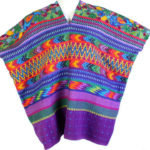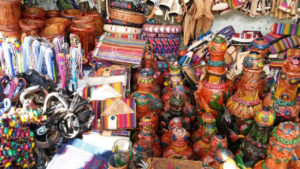Modern Huipil
Series of changes has eroded the traditional life of indigenous communities and, thus, the world of their textiles. Migration to urban centers and abroad is constantly sending home new information and ideas. Better roads and transportation have increased trade between communities. And today globalization is openings up previously isolated villages. Two major events have also marked Guatemala’s recent history: the 1976 earthquake and the armed conflict of 1960-1996.
A factor that has played an important role in this relentless change is the rising cost of huipiles. In many cases the increase has been so dramatic that women are either forced or prefer to buy blouses that display no identifying characteristics of a particular place.These tend to be made from machine embroidered fabrics with floral motif, that anthropologics refer to as “generalized” garments.
Another significant change, occurring earlier in some places that others, is has fashion of wearing huipiles from different villages, chosen to suit the wearer’s personal tastes. For some women, this trend is statement of greater purchasing power, for others, such as professionals or intellectuals, it proclaims ethnic sisterhood, solidarity and ethnic pride. Anthropologists refer to this style of dress as “Pan-Maya”
The ever greater intrusion of the modern world is severing the strong connection between the wearers of indigenous costume and their village of origin. It has transformed the specific dress codes of many towns and villages. It has cast aside the rules that dictate the use of traditional huipiles, And ever in places where distinctive features remain intact, the increased influence of one town on another leads to the adoption of “outside” designs, colors and materials.
These changes in traditional dress go hand in hand with other changes occurring within Maya culture, including new ways to build group identity beyond local and regional borders.
 Previous Post
Previous Post Next Post
Next Post


